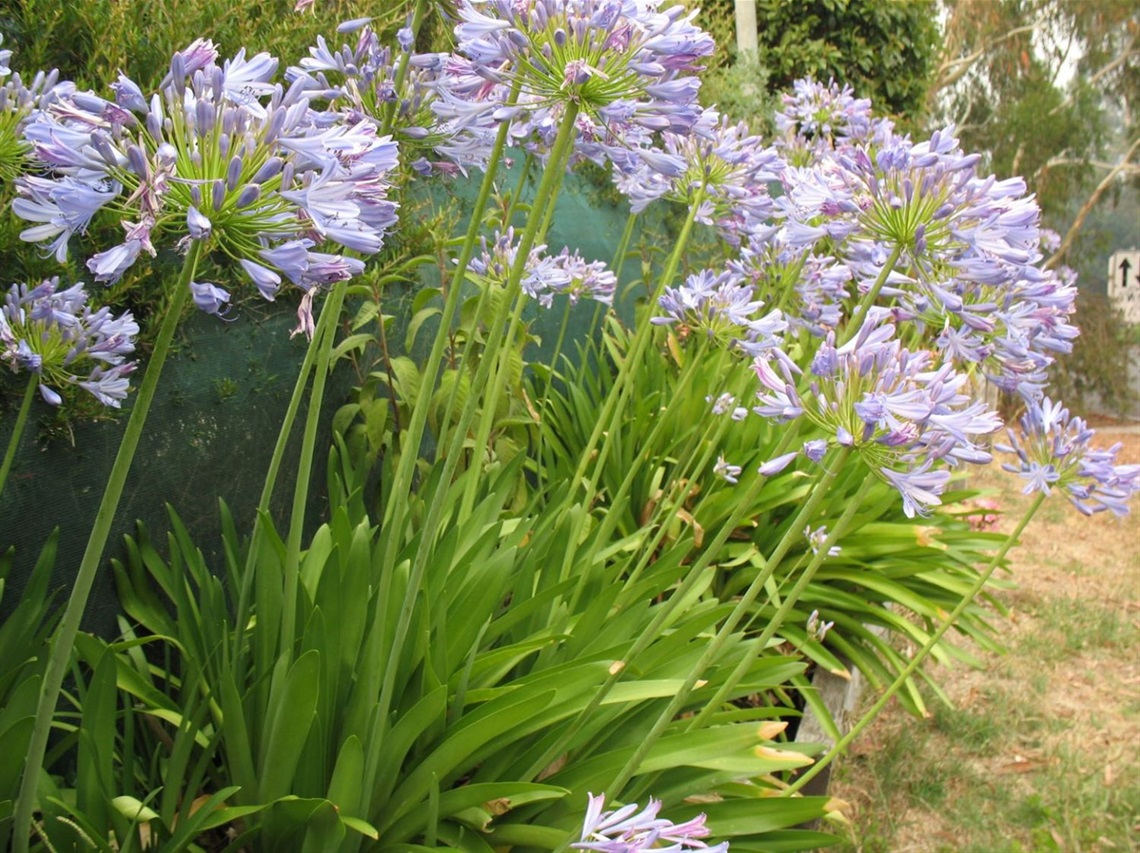Agapanthus

Agapanthus praecox
Origin: Southern Africa
Size: 40-80cm high, 1-1.5m wide
Flowers: November - February
Best removal time: Before seeds form
Seeds: March - May
What it does
Agapanthus invade gardens, bushland and roadside areas, taking over and displacing indigenous grasses and groundcovers. It attracts large numbers of snails and slugs and tolerates a wide range of conditions from damp to very dry.
How it spreads
- reproducing seed and vegetatively (root growth or fragments)
- when seeds are transported by soil movement
- wind and by dumping garden waste in bushland areas
- commonly sold at markets, nurseries, fetes and club fundraisers. Buyer beware!
Removal
Remove by hand
This is only practical for small clumps of the plant. It is important to pull out all roots from beneath the soil. Alternatively, cut the flower heads off before seeding to help prevent spreading. Brush cutting or mowing must be done regularly.
Spray with herbicide
Cut leaves off, brushcut or mow to stimulate new growth, then spray new growth with a registered product and ensure you check the label and follow instructions. Ring the Department of Energy, Environment and Climate Action on 136 186 for full details.
Dig out
You will need to ensure that all the root material is removed when digging out. It is important to avoid dumping the soil elsewhere as this will further distribute the weed. The area should be monitored for any regrowth.
Indigenous alternatives to plant
Many shrub alternatives indigenous to the Yarra Ranges region are available and would make great substitutes for Agapanthus. Some alternatives include:
How to dispose of weeds
By disposing of environmental weeds correctly you can prevent re-infestation on your property and elsewhere.
- Landfill (Weed Wipeout Tip vouchers available for some species).
- Green waste bin ensures that weeds are not able to spread.
- Woody weed stems can be bundled for green collection twice per annum.
- Composting (excluding seed heads or species with vegetative reproduction, e.g. Wandering Trad).
- Burning in accordance with Council and the Country Fire Authority (CFA) prescribed burning periods and regulations.
- Recovery and transfer stations available for weed tipping are Healesville, Wesburn, Coldstream, Lysterfield and Montrose.
Using Chemicals
Non chemical treatments is often the most effective and safe option especially on smaller scale infestations.
Where chemical use is undertaken:
- Always follow the manufacturer’s guidelines when using chemicals.
- Wear protective clothing and eyewear
- On purchasing your herbicide, always ask for a Materials Safety Data Sheet (MSDS) or refer to the manufacturer’s website for specific safety guidelines and information.
- Some herbicides will kill other plants and not just the target species.
- Near waterways herbicides can be very poisonous to aquatic life.
- Use chemicals sparingly and be sure that you are using the right chemical and application technique.
- Ensure the weather conditions are suitable (e.g. minimal wind and no rain expected)
- Apply herbicides at the correct time during the plant’s growth cycle so you get the best results.